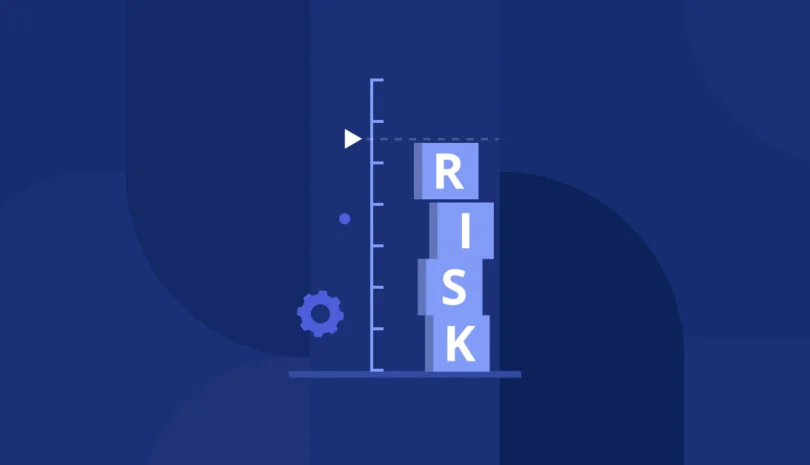Managing third-party risk has never been more complex. Expanding global supply chains, increasing cybersecurity threats, and evolving regulatory requirements are stretching the limits of traditional risk management practices. Many organizations still rely on manual questionnaires, spreadsheets, and static assessments that can’t keep pace with the speed or scale of modern vendor ecosystems. As a result, visibility gaps, delayed risk responses, and inconsistent evaluations are common challenges for security and compliance teams.
Artificial intelligence is transforming this landscape. By automating repetitive processes, analyzing large volumes of vendor data, and identifying emerging risks in real time, AI-driven tools are redefining how organizations manage third-party relationships. From automated risk scoring to predictive analytics and continuous monitoring, AI brings speed, precision, and foresight to TPRM workflows, allowing teams to move from reactive oversight to proactive, data-driven risk management that supports both compliance and business agility.
Why Third-Party Risk Workflows Need AI
Modern organizations depend on vast networks of vendors, partners, and service providers, many of which have direct access to sensitive systems or data. As these ecosystems grow, tracking and managing risk across hundreds or even thousands of third parties becomes increasingly difficult. Each vendor introduces new dependencies, configurations, and compliance obligations that traditional processes struggle to handle.
Manual workflows only compound the problem. Security teams spend countless hours on due diligence, reviewing risk questionnaires, and analyzing contracts, leaving little time for continuous monitoring or strategic initiatives. These efforts often result in fragmented data and delayed risk decisions.
Meanwhile, the threat landscape evolves in real time. Cyberattacks, data leaks, and regulatory updates can occur faster than manual teams can respond. AI bridges this gap by automating key tasks, analyzing risk indicators continuously, and enabling organizations to identify and mitigate emerging threats before they escalate.
Key AI Use Cases in TPRM
Artificial intelligence enhances every stage of the third-party risk management lifecycle, from onboarding to ongoing monitoring. By automating repetitive processes, analyzing large datasets, and generating real-time insights, AI enables organizations to manage vendor risk more efficiently and accurately. The following use cases highlight how AI-driven tools are transforming traditional TPRM workflows into intelligent, scalable, and proactive risk management programs.
Automated Vendor Risk Assessments
AI streamlines vendor onboarding by automating questionnaires, scoring responses, and identifying inconsistencies that require deeper review. Instead of manually reviewing lengthy submissions, risk teams can rely on AI to prioritize vendors based on inherent and residual risk levels. Machine learning models evaluate key factors such as data access, geographic exposure, and compliance posture. This automated approach accelerates due diligence, ensures consistency in risk evaluations, and helps organizations focus their resources on the vendors that pose the highest potential impact.
Real-Time Risk Monitoring
Static, periodic assessments leave gaps in visibility between audit cycles. AI-driven monitoring tools continuously scan vendors for signs of cyber incidents, compliance violations, and financial instability. By analyzing external threat intelligence, regulatory databases, and media sources, AI detects early warning indicators that manual reviews often miss. Automated alerts help security teams act quickly, reducing the time between risk identification and remediation. This continuous oversight strengthens resilience and supports a more dynamic, data-driven approach to vendor risk management.
Intelligent Document Processing
Natural language processing (NLP) allows AI systems to read and interpret complex legal and compliance documents at scale. These tools automatically extract and analyze clauses in contracts, audit reports, and security certifications to flag potential risks or missing requirements. AI can identify data protection obligations, service-level commitments, and noncompliance with standards like GDPR or ISO 27001. This automation not only accelerates contract reviews but also ensures consistent and accurate documentation across all vendors.
Predictive Risk Modeling
AI forecasting helps organizations anticipate vendor risks before they materialize. By analyzing historical performance, market indicators, cybersecurity signals, and even geopolitical data, predictive models reveal emerging vulnerabilities within the vendor network. These insights enable proactive mitigation, such as diversifying suppliers or strengthening controls, before issues escalate. Predictive risk modeling transforms TPRM from reactive response to forward-looking strategy, improving both operational continuity and overall risk posture.
Workflow Automation & Orchestration
AI seamlessly integrates with governance, risk, and compliance (GRC) platforms to orchestrate workflows across departments. It automatically routes tasks, assigns responsibilities, tracks remediation efforts, and updates dashboards in real time. This coordination ensures accountability and accelerates the closure of vendor-related findings, keeping risk management programs efficient and transparent.
Benefits of AI-Enabled Third-Party Risk Workflows
Adopting AI in third-party risk management delivers clear, measurable advantages across speed, scalability, and overall resilience.
- Speed and Efficiency: AI automates manual tasks, allowing vendor risk assessments to be completed in hours instead of weeks. Faster onboarding means security teams can keep pace with business growth without compromising due diligence.
- Scalability: Automation enables teams to manage thousands of vendors simultaneously with fewer resources. Routine activities like data collection, scoring, and reporting are handled automatically, freeing time for strategic oversight.
- Improved Accuracy: AI applies consistent logic to every risk assessment, reducing human error in contract analysis and scoring. Machine learning continuously refines models to ensure decisions remain data-driven and reliable.
- Proactive Risk Management: Predictive analytics identify potential issues before they lead to incidents or compliance breaches. This allows organizations to take preventive measures instead of reacting to crises.
- Cost Reduction: By minimizing manual labor, reducing the risk of fines, and preventing costly security incidents, AI-driven workflows lower total operational and compliance costs while strengthening long-term risk resilience.
Challenges & Best Practices for AI Adoption in TPRM
While AI offers significant advantages, implementing it within third-party risk management workflows comes with its own set of challenges.
Challenges:
- Data Quality and Integration: Many organizations struggle with fragmented or incomplete vendor data. Integrating AI tools with legacy systems and disparate data sources can limit effectiveness if data quality and structure aren’t standardized.
Transparency and Explainability: AI-driven decisions can appear opaque, especially when algorithms generate risk scores without clear reasoning. Ensuring interpretability and auditability is essential for maintaining trust and regulatory compliance. - Change Management and Staff Training: Transitioning from manual to AI-enabled workflows requires new skills, updated processes, and cultural alignment. Without proper training, teams may resist adoption or misuse new tools.
Best Practices:
- Start Small: Begin with targeted, high-impact use cases such as vendor onboarding or automated risk scoring to demonstrate value and build internal confidence.
- Choose Trusted Tools: Select AI solutions with strong security controls, compliance certifications, and transparent methodologies.
- Human Oversight: Keep humans in the loop for review, validation, and exception handling. Combining AI efficiency with expert judgment ensures balanced, accountable, and effective risk management.
The Future of AI in Third-Party Risk Management
The next evolution of third-party risk management will be defined by more advanced and interconnected AI capabilities. Generative AI will play a major role in automating vendor risk reporting, summarizing assessments, and producing real-time insights for executives and auditors. These intelligent reporting tools will not only save time but also improve the clarity and consistency of risk communication across the organization.
Emerging integrations between AI and blockchain will enhance vendor identity verification and data integrity, enabling organizations to validate third-party credentials instantly and securely. This combination will strengthen trust across complex supply chains and reduce fraud or misrepresentation risks.
Finally, AI-driven risk management will expand beyond cybersecurity and compliance to incorporate environmental, social, and governance (ESG) metrics, supply chain stability, and operational resilience. This holistic approach will help organizations anticipate interconnected risks and make more informed, sustainable decisions about their vendor ecosystems.
From Manual to Modern TPRM with AI
AI is transforming third-party risk management from a reactive, manual process into a proactive, continuous risk program. By automating assessments, monitoring vendors in real time, and generating predictive insights, AI empowers security and compliance teams to identify and address risks faster than ever before. What once took weeks of manual effort can now be accomplished in hours with greater accuracy and consistency.
For organizations seeking to modernize their TPRM strategy, adopting AI-powered tools is no longer optional; it’s a competitive necessity. Platforms like Panorays bring automation, intelligence, and scalability together in a single solution, enabling teams to streamline onboarding, maintain continuous oversight, and confidently meet regulatory demands.
Move beyond manual risk management. Discover how Panorays can help you modernize your third-party risk workflows with AI-driven automation and continuous visibility. Book a personalized demo with Panorays to see it in action.
AI in Risk Management FAQs
-
Traditional tools rely on manual inputs and static data, while AI-driven systems continuously learn and adapt. AI can process large, complex datasets, identify hidden patterns, and generate real-time insights that humans or legacy tools might overlook. This enables faster, more accurate, and predictive risk management across the vendor ecosystem.
-
Yes. AI can continuously scan external threat feeds, vendor networks, and public data sources to detect anomalies or early indicators of potential cyber incidents. By correlating data from multiple sources, AI systems help organizations identify breaches, vulnerabilities, and compliance gaps faster, reducing exposure between periodic audits or reviews.
-
AI enhances visibility across a wide range of risks, including cybersecurity threats, compliance violations, financial instability, reputational damage, and operational disruptions. It can also support emerging areas like ESG and supply chain resilience by integrating non-traditional data points into risk models.
-
Start by identifying high-impact areas where automation can provide immediate value, such as vendor onboarding or continuous monitoring. Ensure data quality, define measurable goals, and choose AI platforms with strong integration capabilities and transparent methodologies.
-
Not necessarily. Platforms like Panorays are designed for security, compliance, and risk teams, not data scientists. With built-in automation and intuitive dashboards, Panorays enables organizations to leverage AI for vendor assessments, monitoring, and reporting without requiring deep technical expertise.


